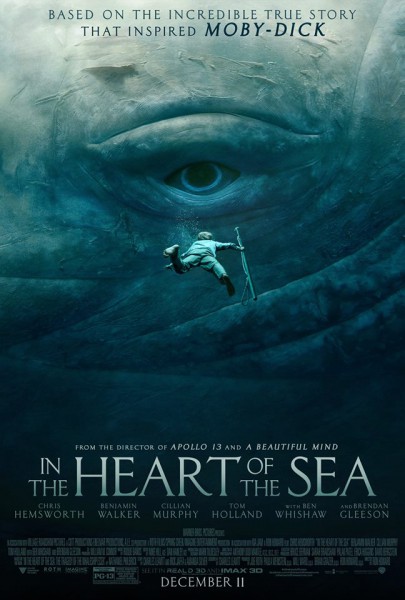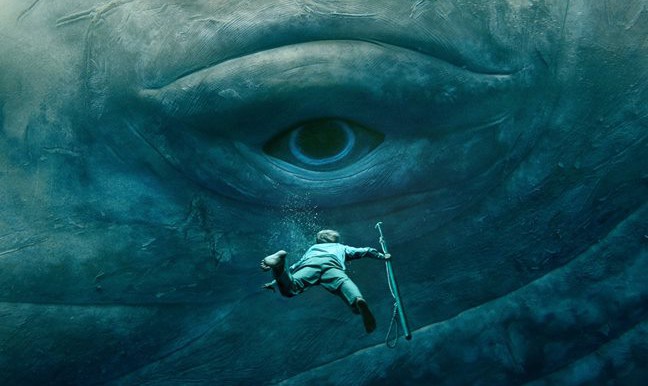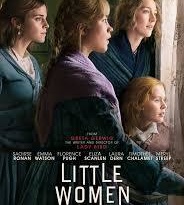REVIEW: “In the Heart of the Sea” lacks heart

By Isabella Ainsworth,
Bluedevilhub.com Staff–
Kurt Vonnegut once said that in good writing, “every character should want something, even if it is only a glass of water.” Vonnegut’s rule, which is more about storytelling than it is about any specific medium, should also apply to movies. Motivation is key for empathizing with all characters, or, at the very least, it is key to understanding why characters are doing what they are doing.
But in “In the Heart of the Sea,” motivation is lacking.
Why are they going far out to the sea? Why would they rather catch the whales? Why do they keep going, when it would be so much safer and easier to go home?
Answers to these questions are only ever hinted at, obliquely, and generally the movie leaves motivation up to the viewer.
The movie is based on the book by Nathaniel Phillbrick, which won the 2000 National Book Award for Fiction. Both works detail an 1820 encounter with a sperm whale that attacked a ship and ultimately sunk it, stranding its sailors 2,000 nautical miles away off the shore of South America.
The story is told in flashbacks, framed by a conversation between Herman Melville (Ben Whishaw) and Thomas Nickerson (Brendan Gleeson). Nickerson is supposedly the last person alive on the whaling ship Essex when it went down.
In actuality, this conversation never took place. Although Melville did read an account by Owen Chase and talked to Chase’s son, he never met Nickerson.
But in the Hollywood version, Melville, with his rugged, full beard and pleading eyes, comes to Nickerson’s house one night and gives the old sailor an offer. All of Melville’s money, enough for three months lodging, in return for one night of conversation about what happened on the Essex.
Nickerson finally agrees, and the real story begins.
Owen Chase, played by a trimmed-down Chris Hemsworth, is the main character. Born into a farming family, he becomes a whaler and desperately tries to attain the rank of captain, but is passed over for captainship of the Essex so that a less experienced, but more connected, Thomas Pollard can please his father. Instead, Chase grudgingly agrees to be the first mate.
The Essex leaves the Nantucket, and what follows is a disastrous journey.
Every once in a while, the movie leaves the story and goes back to the poorly-lit, rickety old cottage where the conversation between Melville and Nickerson is taking place. These breaks away from the main plot of the movie serve to remind you why you are watching this two-hour movie about nineteenth century whaling—this true story ended up inspiring “Moby Dick,” considered one of the greatest American novels of all time.
But the conversation between Melville and Nickerson isn’t enough to make up for the long and tedious scenes on the sea.
And the flashes to the future aren’t enough to make up for the forced exchanges between the characters. Most lines are cliché, and almost all of them are melodramatic–the type of lines where you feel like the camera should zoom out on the sunset while dramatic music plays in the background and the credits start to roll up. Not the dialogue meant for the middle of the movie.
Of course, not everything in the movie was bad. The $100 million it took to produce the movie was well-spent on the special effects and the soundtrack. Long, roaming shots of the ocean intersperse thrilling storm scenes while the whales scenes also enliven the plot.
Special effects, however, are no substitute for good storytelling. Without a rationale for what the characters are doing, the movie falls flat.



